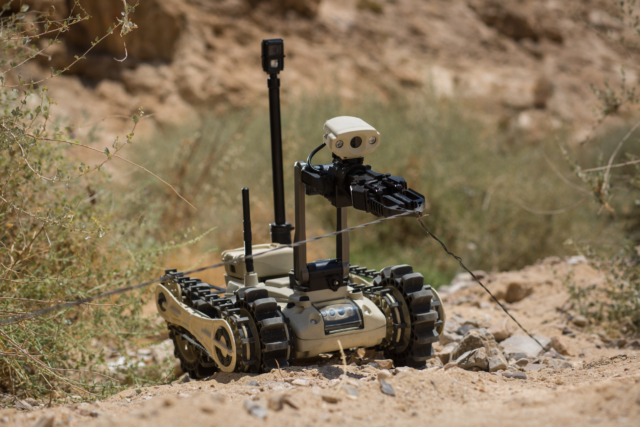Military Robots: The Next Humanitarian Superheroes?
 Researchers have recently discovered that military-designed robots have the ability to save lives. Humanitarian assistance through robots can help tackle poverty and provide support to those in need on land, air and sea. These robots are especially important in impoverished, war-ridden areas. Overall, robotic resources can help tackle crises that would otherwise be dangerous, deadly or impossible for humans to enter.
Researchers have recently discovered that military-designed robots have the ability to save lives. Humanitarian assistance through robots can help tackle poverty and provide support to those in need on land, air and sea. These robots are especially important in impoverished, war-ridden areas. Overall, robotic resources can help tackle crises that would otherwise be dangerous, deadly or impossible for humans to enter.
Terrestrial Robots
Terrestrial military robots, also called throwable robots, serve as life-saving engines on land. The robots work by entering confined spaces, searching through debris and disposing of bombs and hazardous waste. Throwable robots are light, easily transportable objects that are shock-resistant and often remote-controlled. The robots are designed to enter tight spaces and transmit live audio and video to users. Footage from throwable robots can help rescue teams locate people who are trapped in confined spaces and monitor their wellbeing until the civilians reach safety. Currently, more than 550 U.S. law enforcement agencies and military units use throwable robots to assist in their missions and help preserve human life.
Bomb squads also use military robots to locate, defuse, detonate and dispose of bombs. Occasionally, bomb squads deploy throwable robots before bomb disposal robots to inspect the scene and search for potential bombs. Amid war and natural disasters, terrestrial military robots can offer ample humanitarian assistance. The military robots can douse fires, enter small spaces and search through rubble without experiencing the harm of smoke, dust or extreme heat. The future of terrestrial robots is promising as recent innovations of better sensors and robust agility will elevate the technology to the next level.
Aerial Robots
Aerial military robots impact people’s quality of life in areas hit badly by natural disasters. One example illustrates drones transporting humanitarian aid and collecting data to assist in natural disaster recovery. The International Organization for Migration (IOM) started using aerial robots in 2012 to measure the extent of displacement and physical damage from natural disasters in Haiti. Furthermore, the World Health Organization and Médecins Sans Frontières have used aerial robots to deliver medical supplies to Papua New Guinea and Bhutan.
Aerial robots can also assist in search and rescue efforts in a similar way to terrestrial robots. In war and disaster zones, aerial robots can quickly locate people in need of medical assistance. Drones are often faster and more affordable than other modes of transportation. In many circumstances, drones can capture higher quality data better than humans, for instance, detailed aerial view photographs of flood zones and refugee camps. Aerial robots can also protect humans from entering dangerous situations. Alongside terrestrial robots and bomb disposal robots, drones can scope out potential explosives and identify the best strategy for removing the explosives.
Maritime Robots
Nicknamed “robotic lifeguards,” maritime military robots can save lives at sea. In 2016, a fast-swimming maritime robot named Emily saved more than 240 refugees from drowning on the coast of Greece. Maritime robots have the potential to endure extreme temperatures and are not vulnerable to exhaustion, allowing these robots the capability to become highly effective lifeguards in the future. Additionally, maritime robots are significantly faster than human swimmers. With this ability, robots can use heat sensors to quickly locate people underwater. In shipwrecks or other sea accidents, maritime robots can carry several people to shore. Maritime robots are still relatively rare, but as they become more popular, the robots can be especially effective in places like the Mediterranean Sea where refugees are frequently at risk of drowning.
Overall, robotics technology has the potential to transform disaster and crises relief efforts. Able to withstand vulnerabilities that humans cannot, these robots illustrate the increasingly important role of technology in rescue, relief and aid endeavors.
– Cleo Hudson
Photo: Flickr
